|
Want campus carry? Start asking for permission. We’ll help (but no promises). Not for K-12 schools! State law allows for the presidents of Nevada’s public colleges and universities, known as the Nevada System of Higher Education (NSHE), to grant written permission to carry firearms on campus. Unfortunately, most of the time permission to carry for self-defense is denied. The standard is so stringent, that even corrections officers attending classes have been denied permission. Unless it is highly likely that you will be victimized and can prove it, permission will be denied. NSHE policy effectively denies Nevadans their right to self-defense. It’s time to change all that. For too long, Nevadans have been dissuaded from applying simply because “How do I apply?” is met with “Don’t bother, they don’t approve anybody.” You can help change that by asking for permission and showing that yes, there is a demand for students and citizens to defend themselves on campus. Nevada Carry is providing a form, that includes hold harmless language and release of liability, to help you apply for permission to carry a concealed handgun on campus and/or store it in your car. The goal is to one, show demand exists, and two, track the process and exact reasons for denials, along with the persons involved. If people are asking and being told “no” in secret, we can’t know the reasoning or persons behind the decisions. So if you apply for permission, please email us all copies of correspondence with the university officials, including denials. PERSONAL INFORMATION WILL BE KEPT STRICTLY CONFIDENTIAL. This is a process; you will probably be told no, but that is part of how we start to change things. NSHE’s Policy Terms Presidents have discretionary authority, subject to the conditions set by the Board of Trustees. It is a highly restrictive “may issue” policy. The duty of the president is to: An NSHE institution President who receives a written request from an individual to carry a concealed weapon on the campus must consider, investigate, and evaluate each request on a case by case basis, giving individual consideration to each specific request, and must make a determination on each request according to a need standard. Permits are may issue and require a specific “need” under the most stringent interpretation of the word. Determining factors are:
1. a specific risk of attack presented by an actual threat; 2. a general risk of attack presented by the nature of the individual’s current or former profession, as established by actual evidence of increased risk of attack on such individuals; or 3. a legitimate educational or business purpose. The application is reviewed. Often campus police call for an interview and any documentation regarding specific threats are requested. In most cases, a denial is then issued. Anyone who is denied has the right to request an appeal. Read the full policy here. Most approvals are for non-carry reasons, such as class educational displays. Carry permission is granted mostly to security personnel, armored car drivers, and off-duty law enforcement teaching on campus. Bare Self-Defense For the average person to get permission for self-defense carry, the standard is far and beyond “good cause,” but practically requires that an attack has already happened or one is highly likely to be attacked. Elevated, but non-specific threats, or a general concern for one’s safety is not considered good enough to get permission to carry. Self-defense because of what could happen is as good as reason as any to apply, so if that’s all the justification you wish to put on the form, why not? Asking for permission to carry after you have been victimized is no good. If NSHE wants to deny people, they will. What victim of random crime anticipates that they will become a victim in the near future? Do only those with verified death threats against them or abusive spouses deserve protection? Recently, a woman was kidnapped at an UNLV parking garage and sexually assaulted at gunpoint. Once again, campus police failed to protect a student from being attacked. All the campus gun ban did was ensure that this woman was an easy target. However, she was able to grab the suspect’s gun, after being assaulted, and managed to get away. Opponents of campus carry say that the student will just be disarmed by an attacker; they never talk about the victim getting the bad guy’s gun. This situation should never have happened. As originally proposed, colleges and universities were never meant to be gun-free zones. The historical record is clear; legal guns on college and university campuses have never been a problem. Legislators did not originally seek to deny concealed carriers the ability to carry on campus, but rather allowed it to happen as carrying a handgun legally was uncommon. Authorities were to use their discretion to the benefit of gun owners and not to deny practically every request. Armed citizens and members of the educational community must be involved in the elections and actions of the Board of Regents. Regents who are friendly to gun owners can help create quality policies without resorting to the difficulties of the legislative process. Continue reaching out to students, teachers, and professors about the Second Amendment and the gun culture. 2017 is not 1989. Handguns and self-defense carry are popular in America and once again they are recognized by the majority as not only a right, but sometimes as a necessity. The old conventions about who carries are gun and the risk of accident vs. probability of a defensive gun use have changed. Old policies created under a paradigm that no longer exists and enforced today for political reasons need to be eradicated or altered to reflect today’s reality. About the Form The form is unofficial and not approved by NSHE. It was not written or reviewed by an attorney and none of this is legal advice. It is simply to help interested citizens apply in an uniform manner that might get some traction with NSHE officials. One who applies is strictly doing so on their own. Nevada Carry makes no guarantees and accepts no liabilities. We are not making a promise that you will get permission or that any of this will work. What will probably happen is a denial. After receiving that, appeal because you can. Fight them every step of the way. Politely and respectfully, of course. If you list merely self-defense, it would be helpful to include statistics and a personally written statement about the dangers of random crime and how armed citizens can protect themselves. Tell them the things we tell each other about good guys with guns. If we can’t change their minds, then we can provide them with the undeniable truth. Make them articulate in detail why they are denying you. Then we can work on getting the Trustees to change their policy and one day, legislation to undo the law altogether. Again, apply, appeal, and provide Nevada Carry copies of all correspondence. PERSONAL INFORMATION WILL BE KEPT STRICTLY CONFIDENTIAL. Please do not apply to any campus that you do not attend or have business at. On Facebook, a person asked if he could shoot the feral cats that harass him and his pets. Rather than feel a true threat of death or serious injury, the poster seemed annoyed with the animals and the lack of help his landlord and animal control could give him. His solution seemed to be to shoot the cats. There are two laws that might apply, in our case, shooting in a built-up area like a city. Some areas exempt lawful self-defense against animals, even in defense of property (pets are legally property). Pest control is not a topic of this blog; we are not discussing the aspects of animal cruelty killing feral animals, but rather self-defense against animals. Discharge of firearm laws vary widely from location to location. In many cases, there is no explicit exemption for even shooting a criminal in self-defense, though it is generally understood to be an exception using common law and common sense, even before justifiable homicide laws. Animals make things a bit murky though. “Self-defense” is not defined by state law. A common understanding would be protection of one’s self, family, or property, depending on the circumstances. Self-defense is a valid defense to many crimes, articulated by case law, statutes, or simply by prosecutorial, judicial, or even a jury’s discretion. It is unlikely that someone who shoots a truly vicious animal that is or is about to attack would be prosecuted. The consideration that should be made is the actual danger; is anyone likely to sustain serious injuries or be killed? If it is legal to shoot an animal in defense of one’s own animal, is the predator a credible threat to kill or seriously injure the other animal? Discretion must be used. The threat of the animal should be greater than the danger of a stray bullet. Would neighbors or a jury find the actions reasonable? Let’s examine the local laws where there may be an express “dangerous animal” exception. Clark County (unincorporated areas) Discharge of firearm prohibited in all built-up areas and the below is not an exception to the discharge ordinance. The below section is an animal cruelty exception that may be interpreted as a defense. 11.30.110 It is unlawful for any person to fire upon any animal unless: (C) In necessary self-defense, or in defense of habitation, property or person; (D) The animal is venomous or known as dangerous to life, limb or property; Carlin 6-1-3 Excludes: 1. The discharge of any gun above described by any person within the city limits or without the city limits but into or across the city limits, while in the defense of the said person's life or the lives of his family or the same person's home or property. Elko County Title 7, Ch. 1 All sections exempt: The discharge of a firearm by any person in the necessary defense of himself, his family or property. Ely 5-1-22 in case of necessary defense of self, family or property Henderson Note that “self-defense” is not defined nor is property referenced. 8.98.061-C-3 "One who discharges a weapon in lawful self-defense" Lander County 9.16.020 The discharge of a firearm by any person in the necessary defense of himself, his family, another person or property. Lyon County 7.02.02-B-3-b. Person lawfully discharging a firearm in protection of life or in self-defense as defined in Nevada law; [property not mentioned] Mesquite 5-1-10 B-2-a Necessary self-defense or the defense of one's family or property. Mineral County 9.76.020-B-3 Any person lawfully discharging a firearm in protection of life or property. Pershing County 9.16.030-D This section shall not apply...to any person lawfully discharging a firearm in protection of life or property or livestock. Washoe County (unincorporated areas) 50.092 2. This section does not apply to: (c) To any person lawfully discharging a firearm in protection of life or property. White Pine County 10.20.020-A-3 The discharge of a firearm by any person in the necessary defense of himself, his family or property The moral of the story is that you shouldn’t go around shooting animals unless they are attacking you or another person or your pets (where legal). Even where legal, before killing animals to protect pets, livestock, crops, etc. or even just to cull nuisance animal populations, consult with animal control and your local authorities.
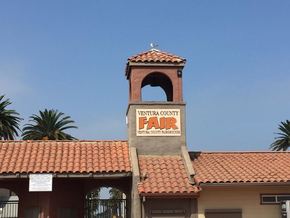 Ironically, I had never been to a gun show in California until the August Crossroads of the West in beautiful seaside Ventura. Like the deep-sea fishing trip my father promised, we never made it to a gun show. I did however get all the AWB-era gun magazines and catalogs that he fed our small milsurp collection, promptly thumbing them to death. I was pleasantly surprised with the atmosphere inside, despite the usual scummy gray skies of a Southern California summer.. It was like a gathering of oppressed, like-minded individuals thumbing their noses at the government. I even saw at least one person openly carrying a GI-style M1911. 80% lowers, the uppers, and the parts to finish them dominated the room. Nevada’s own Polymer 80 Glock style guns were everywhere and interest was intense. Incidentally, my retired cop buddy was chatting it up just the day before with a gorgeous 20-year old woman about her Polymer 80 build and meeting up at the show. Sadly, we did not cross paths with her. California’s recent banning of the “bullet button” created the surge in alternatives to keep an AR unregistered. Some tables showed off locks that only dropped the magazines when the upper and lower were separated, while the parts bazaar sold clever work-arounds like pistol grip fins and angled foregrips. Tables of featureless AR-15s equipped with Thordsen stocks looked pretty good, despite their strange device-less muzzles. Surplus, antique, and just plain older guns were far more evident than newer guns. Whole collections of US GI rifles in varying makes and grades were available. Perhaps the wackiness of California laws made such displays more viable or more prominent than in other states, where it feels like hunting a quality surplus weapon is like finding a needle in a haystack. Of course, private sales are illegal and have been for twenty years or so, requiring the buyers to move over to an FFLs table, who would then hold it for the ten-day waiting period (and report the sale to the state). One unique aspect was that the smaller ammo venders are now required to put up a physical barrier in front of their ammo, which meant the table venders put chicken wire across their display boxes or even just aluminum foil. Even with the utterly ridiculous and tyrannical obstacles thrown up by the state, there was a pretty decent crowd. It was far more popular than a typical Las Vegas mid-summer gun show. Many of the sellers remarked that they would continue sell, just to fight the good fight, and to annoy the anti-gunners. 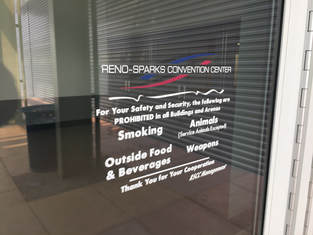 In an ironic reversal, California allows concealed weapons in public buildings while Nevada does not. In an ironic reversal, California allows concealed weapons in public buildings while Nevada does not. Reno Despite my best efforts, I saw no undercover California DOJ agents slinking through the Reno aisles looking to bust Californians trying to smuggle ammo home. Agents have typically identified Californians by clothing that announces that one likely is a California resident. They then follow the suspects, observe their purchases, follow them to their vehicle, and once the vehicle crosses the border, marked units make a traffic stop. I was hoping to identify one, follow them around, stymie their efforts, and see if I couldn’t get Reno PD to arrest them for something. Oh well. Instead, I picked up a couple minor things, got a great deal on some books, and had a great conversation with two guys about Little Bighorn. Reno was miserable at the end of July, choked with smoke as it was. The gun show offered an indoor respite from the misery, but as usual (mainly because I was unwilling to spend several thousand dollars filling up my gun safe) I felt a little unsatisfied when I left. I didn’t see much that was new or see any particularly remarkable deals. Compared to Reno (and Las Vegas shows) the Ventura show had a better overall atmosphere. There are too many FFL tables at gun shows, often taking up much of the floor and constituting the majority of gun sold. These guns are rarely sold at a discounted rate and don’t compete with the big online “we-ship-to-your-FFL” houses. If I am paying retail, I’d rather do it from my gun stores of choice and support the existence of a brick-and-mortar gun store. I didn’t come to a gun show to see an entire gun store laid out on tables; I came for private sales. Secondly, there is a disappointing lack of private sales going on. The Reno show at least had part of a whole wall filled with private sellers rather than them being scattered haphazardly through the hall. Paranoid or not, many of us prefer to buy guns without the hassle of paperwork and background checks. A gun show is the perfect meeting place for buyers and sellers to come together and make great deals in a way that would thwart future registration via Form 4473. The dearth of private sales may be related to factors beyond anyone’s control. Those who remember gun shows from the pre-AWB era as better than today with a wider selection, better deals, and better private sellers are constantly complaining about today’s gun shows. My personal theory is that all the “good” guns like WWII surplus and cheap guns of yesteryear have become collectables and are being held on to. It may also be generational; the 60 and 70 year old men who sold guns to today’s 40-60 year old men are now mostly dead, their gun collections waiting to be liquidated when the Baby Boomers get too old to enjoy them. Perhaps in 10-15 years we will see a resurgence of cheap, quality guns being sold off in large numbers as men and women get rid of the stuff that the kids don’t want to inherit. Then of course it could just be the Internet moved the market to private forums and sites like Gunbroker, etc. This is the first take on my thesis for my forthcoming book on the general history and topic of open carry. past to present. This law denounces not as harm With the so-called victory for open carry and the Second Amendment in Young v. Hawaii, many are no doubt curious why open carry is called the constitutionally approved method of carrying a gun, while concealed carry often requires a permit. Though society seems more comfortable with concealed carry, courts at least claim that their preference under the law is open carry. The huge discrepancy has to do with the history of violence in the South and in the Old West. Though commonplace and the preferred method of carrying a handgun, concealed carry suffered from a negative reputation as a “pernicious practice” and “evil habit.” This demonization was due to concealed weapons’ associations with passionate violence and sudden homicides. A culture that tolerated and often encouraged easy violence blamed not the hearts of men for crime, but the effects of an inanimate object in the pocket for influencing men to kill. This violence and supposed deception justified many legal decisions against concealed carry, but supporting open carry. Concealed carry has generally always been common, as much as, if not more than, open carry. Open carry was often not as widespread as imagined because of negative attitudes towards carrying guns. In many places until the shall-issue wave of concealed carry laws in the 1980s and 1990s, carrying a gun was seen as a suspicious, if not outright criminal, practice. Concealed carry’s historical tarnished reputation so demonized carrying a gun, it discouraged many from carrying openly, even though it was legal. Today sensible people find it laughable to think that merely placing a weapon under clothing would make someone more liable to be violent, yet in the 19th Century and early 20th Century, many believed just this. Notorious gunmen, criminals, and other undesirables hid their guns just as they concealed their evil intentions. This idea didn’t come from nowhere. Pre-Civil War Southern society had a nasty habit of dueling or fighting over matters of honor. Duels were considered the dignified way of handling disputes while brawls in the street or the heat of the moment were considered low brow. By the mid-19th Century, dueling died out as the younger generations thought them silly. Rather than pre-arrange a duel, the post-dueling society men fought in hot blood. No matter how the dispute or insult was settled, violence in defense of honor became a Southern cultural norm. As Southerners made their way across the frontier all the way to California, their fighting culture came with them. In mining camps, prairie cattle towns, and out on the range men fought each other over minor pretexts, much as they do now, except then, fights that lead to murder were much more common and almost socially acceptable. Refusing to fight to defend one’s honor was considered cowardly. Non-lethal fights often and easily turned into murder as the taboo against casual violence was weak. As words deteriorated into fists, or even before that, someone would draw a weapon carried in their clothes and assault or kill the other. The problem of senseless murders was exacerbated by the refusal of juries to return guilty verdicts. Usually the barest excuse for self-defense would result in a jury acquitting the killer. For instance, a man would pick a fight, the other guy would reach for a pocket pistol or knife, and the instigator would shoot first, claiming self-defense because the other guy was reaching for a gun. The best way to compare this culture to today would be as if police didn’t investigate and prosecute gang murders because society places little value on the lives of gang members. Outside an often ambivalent ghetto culture, American society is horrified by inner city violence. It didn’t matter that the only reason the victim was going for a weapon was because of the instigator. Sometimes, men were acquitted because the bare fear the victim who reached into his pocket “might” have had a weapon. Juries would accept the defense because the killer had a fear, remote as it might be, that the other party was armed. Eventually, society stopped condoning what amounted to little more than legal tricks to excuse murder. “Going for the pocket” became the bane of carrying concealed weapons and blamed for the ills associated with “pistol toters.” Today, this is known as a “furtive movement” and back then it was called the “hip pocket defense.”. One example is the death of Jim Courtright in 1887 in Texas. Short dropped his hands, as if to smooth his vest. It was no time for movements even remotely suspicious. In such times as this, many a man in Texas has committed suicide by reaching abruptly for his handkerchief! Going for a gun, whether one was there or not, could lead to shots being fired. This mere possibility often created reasonable doubt in the minds of a jury. As society became tired of juries acquitting on such thin grounds, justifiable homicide laws began to change. Defenses such as “I shot first as he might have had a gun,” were thrown out. An unreasonable, unsubstantiated fear was no longer enough to avoid a murder or manslaughter charge A bare fear is not sufficient to justify the killing. It must appear that the circumstances were sufficient to excite the fears of a reasonable person and that the person killing really acted under the influence of those fears and not in a spirit of revenge. Banning concealed carry also had another effect in the courtroom. If concealed carry was illegal, then it could not be presumed the victim had a gun simply because it was possible he was armed. A concealed weapon law meant that the law presumed the victim was unarmed and the killer must have known in fact otherwise. And if a man was killed “reaching for his pocket” and no gun was found, then the killer could be convicted because not only was the man unarmed, the killer had no right to suspect the killer was armed. In other words, banning concealed carry took away a lot of excuses. At the same time, justifiable homicide laws came into effect, requiring among other things, if you started a fight, you had to back down and decline to fight any further before you could assert self-defense. The judicial system was also becoming more effective and stronger on the frontier. As a result of these reforms, convictions for murder went up and “honor violence” began to go down. As society tamed, easy killing was looked down upon along with carrying a gun. Family life replaced wild living on the frontier and the kind of undisciplined culture that permitted violence and shooting disappeared as families and the middle class wouldn’t tolerate lawlessness. By the end of the 19th Century, it was considered uncivilized to fight and kill over insults and matters that could be settled in court or shrugged off. These legal reforms and social changes probably had more effect on stopping impulsive violence than gun control, as men predisposed to killing knew that they stood little chance of getting past tougher juries. Mere prohibitions have only worked to keep the honest, honest. Small fines could be paid off and often were, judges reluctant to jail men as the town would have to bear the cost of feeding and housing a prisoner. If the law couldn’t keep everyone honest, then the dishonest criminal would be the only one carrying, or at least open carry would make it obvious who was armed, so the thinking went. Support for concealed weapon laws came from those “who believed that there would be fewer deaths if combatants were forced to ‘fight fair’” without weapons.[1] They were proven wrong about the bans. Gun control such as this was practically new territory and we can excuse those who in untried times exercised magical thinking to believe concealed weapon bans would keep men from packing heat. Morally, open carry meant no gun was being hidden. It was the honorable (and generally legal) way to carry a gun. By contrast, concealed carry for the reasons stated above meant that one was trying to get an unfair advantage on someone or that evil intentions, not just the gun, were being concealed. If you had nothing to hide, then why hide your gun? [1] Roth, Randolph. American Homicide. 2009 p. 219 …[carry concealed weapons is a] savage practice. Arms for self-protection may be needed by travelers and by persons living in unfrequented localities, but in all such cases they should be carried openly, as weapons of defense There is nothing savage about putting a shirt or a coat over a gun. What is savage is escalating trash talking into murder and then, as a society, largely turning a blind eye to the behavior. Now, only among the dregs of society are the impulsive and gang or drug-driven nightclub, bar, and drive-by shootings “acceptable.” Open carry was more common in the Old West and in bygone days, but it was not as common as Hollywood would have one believe. It was more common than today by virtue of the fact that more people carried guns more often. A good explanation is that open carry then was roughly as common as it is now in states where open carry thrives. Open carry has always been a largely rural phenomenon as city dwellers, for many reasons, prefer to carry concealed. Horsemen and cowboys often needed a weapon that could be fired at short range from the saddle or to kill a runway horse dragging its rider to death. Open carry was often a fashion symbol or icon of manhood in the frontier west in a period that lasted at least from the California Gold Rush to the late 1860s. After we had been in the town of Nevada City three or four months, the first ball was given. There were twelve ladies present and about three hundred men. The costumes were eccentric, or would be now. At that time it was the prevailing fashion for the gentlemen to attend social gatherings in blue woolen shirts, and with trousers stuffed into boot-tops. Every man was’heeled’ with revolver and bowie-knife. Mark Twain said of his time in Nevada: I was a rusty looking city editor, I am free to confess—coatless, slouch hat, blue woolen shirt, pantaloons stuffed into boot-tops, whiskered half down to the waist, and the universal navy revolver slung to my belt. But I secured a more Christian costume and discarded the revolver. The prevalence and popularity of open carry varied from time and place. Some places it was a wide-spread practice, whereas in others it was not. It was tied directly to the actual or perceived necessity to carry a gun. For instance, in a violent frontier town, both kinds of carry were common, whereas in cities and pacified settlements few had a need to carry a gun at all. Family men didn’t get drunk and shoot it out in saloons and few felt the need to go heeled in small towns with little crime. Again, this is much like today where those in good neighborhoods with quality police feel that they don’t need to be responsible for their own safety. Open carry declined as early concealed weapon laws increased. Quite probably, the general vilification of handguns lead honest people to hide their guns and take their chances with the lax laws. As the example from Mark Twain shows, there was a time when open carry was common and no one was ashamed of it. Something changed after the Civil War, the resulting “Wild West,” and it was most likely society’s attitudes towards guns, lead no doubt by a growing resentment to the toleration of violence. Until very lately, few very Americans would openly admit that they carry a gun for self-defense because for so long it was assumed that carrying a gun was unnecessary, dangerous, and something that only bad guys did. Police were just a phone call away. It is a shame that carrying a gun for self-protection against predators was stigmatized to the point that we still feel the effects today. Bizarrely, now many are ashamed to openly carry our guns, lest people judge or harass us, while we are perfectly content to hide our guns the same way criminals do. Many various state court cases found that open carry was constitutionally protected (an excellent summary is in the Peruta v. Gore en banc opinion), but concealed carry was not. Though the actual reasons vary case to case, the reasoning was based in the idea that concealed carry was a dishonest thing to do and a root cause of much violence. Open carry suffered no such stigma as it is too hard to cast aspersions about an open carriers intentions if everyone can see the gun (unless you are a 21st Century hoplophobe). As urban life increases population density, it is easy to imagine a variety of reasons, both rational and irrational, why some sort of regulation on who may carry concealed weapons would seem desirable. Especially as a village becomes a city, it becomes increasingly difficult to know whom to trust. In such a setting, the temptation might be strong to make sure that arms are clearly visible. Conflict with someone who is armed will probably be more dangerous than the same conflict with an unarmed person, hence it would be best to know in advance of an argument if someone is armed or not. Neither method of carry is inherently more violent that the other. Concealed carry was simply more common in general and thus was associated with violence. Only by perception was concealed carry considered evil; psychologically there is a connection of a hidden gun to an ambush. Without strong evidence against open carry, justices could not manipulate the Constitution to ban it. Open carry provided a convenient way to ban concealed carry as one method of carry was left available, though many were dissuaded from practicing it. It was schizophrenic time where concealed carry was damned, but many still did it anyway, too dissuaded by the damnation heaped on gun-toting in general to carry openly. It was as if the justices and legislators knew society had cowed to the hysterics of the hoplophobes. Open carry was not as prevalent historically for three main reasons; first, the demonization of carrying a gun. Carrying a gun had gotten a bad rap, that even though many ordinary people in numbers far greater than legally armed citizens today thought it necessary to carry, that they felt they would be shamed if they carried openly. Because of violence and the wrong reputation attached to carrying a gun, an openly carried gun in their minds made them as much as a target for judgement as a dirty, low-down pistol-toting thug. Two, it was easier to slip a gun into the waistband or pocket. Concealed carry being more common was most likely a function of clothing and fashion being different from today. It would have been easier to drop a gun into a large pocket or into the waistband than it was to strap on an old-fashioned leather holster. Modern holsters that are small, light, and comfortable did not exist and the equivalent solution would be to drop in a pocket-liner holster. Three, where carrying a gun concealed or openly was illegal, many carried concealed illegally because it was, or so they felt, it was necessary to go armed. These erstwhile law-abiding citizens were prevented from legally carrying and had to carry concealed because there was no other way. Society had so unfairly lambasted the criminal misuse of guns that the legitimate carrying of guns was something to be kept secret. Additional factors are the increase in modern policing, better communications technology to call for help or spread the word of a crime, increased urbanization, larger and denser populations leading to a safety-in-the-herd effect, and the broad social changes that toughened attitudes towards casual violence and considered carrying a gun “silly” and unnecessary. For reasons of technology, criminal justice reforms, economic prosperity, and social reasons, the majority of the 20th Century was a remarkably peaceful and safe time for many Americans. We had the luxury of being able to rely on police for the most part. In areas with little predatory crime, firearm ownership was unnecessary. With this perceived lack of need, little risk, and few consequences for going unarmed, many lost any desire to carry a gun. Until the crime epidemic of the ‘60s-‘90s that brought us shall-issue concealed carry, that owning and carrying guns might be a solution to crime simply never occurred to most, as many still consider it unnecessary today. Today we know that prohibiting the carry of guns for self-defense does not enhance safety. Open vs. concealed carry is not a debate that has any practical merit in the legal sense. We often carry concealed or refrain from talking about guns because we are afraid what others might think and say about us. While society has gone crazy these last few years, carrying a gun suffers from a negative reputation for reasons that society has forgotten. We are skeptical of carrying guns in public because our great-great grandparents thought it unnecessary and uncouth. The reasons that concealed weapon laws were instituted long ago no longer exist. Open carry should not suffer because over a hundred years ago, people did not want anyone to carry at all. We should not be hiding out guns because it makes those who have been lulled into a false sense of security by the relative peace and safety of our time consider open carry “old fashioned” or odd. The decades of shame for having the audacity to carry a gun, especially where people can see it, needs to take its place on Boot Hill. This debate between open carry and concealed carry is pointless. Among armed Americans, it is a matter of personal preference, comfort, and situation. Legally, hoplopaths have and will offer up open carry as an "alternative" because they are afraid if concealed carry is respected as a full constitutional right, it will lead to more people carrying. Open carry can be the "out" for the justices, who know full well leftist legislatures like California and Hawaii will never implement it. Perhaps someday soon the Supreme Court will call the leftists' bluff and affirm that bearing arms "shall not be infringed." Quotation sources:
The final report by LVMPD on the October 1 Mandalay Bay mass shooting is out. This marks the general end of the local investigation. There is no motive for the killer. Early reports of leftist media in the killer’s home leaked by detectives was not reported. No political connections were found. His girlfriend told police the killer did not discuss politics or gun control. All Sheriff Lombardo said was that he (now) considers this a terrorist attack (as opposed to a criminal mass murder). "It had an influence on a certain demographic of people intended to cause harm." It's shame no one in the press conference asked a follow-up question. Did Lombardo mean "demographic" as country-music-concert-goers or as the type of people who listen to country music? The report also speculated the Ogden/Life is Beautiful connection may have been a rehearsal. If that certain demographic meant mainly country music fans; usually conservatives whites who voted for Trump, it fits the earlier suggestion of political terrorism. If the downtown connection was a dry run, then Paddock was not simply looking for a crowd to mow down. He wanted a specific crowd to kill. Yet some of the killer's Internet searches make one curious if he truly examined other venues for just a mass killing. As it was, this monster's final twist of the knife was to leave no clues as to why. So, by his fruits we must know him. The killer had an abandoned and malignant heart. He was a cruel coward intent on inflicting death and evil. As has been speculated, he was a near genius intent on delivering death and destruction on the largest and most diabolical scale he could imagine. To quote Christopher and Jonathan Nolan, some people just want to watch the world burn. This “motive” has everything in common with most mass killers, each trying to score the largest body count and most infamy. Just the kind of thing you’d expect from a messed up son-a-bitch. His relatives said he threw himself into everything he did with passion; mass murder, as diabolical as it is, would receive the same attention as he gave to learning to fly. His supposed motives were multivariate: revenge/harm to the casino industry, a blackeye for guns and the gun community, wreaking mayhem on a world he’d grown to despise, and fulfilling some sort of sick intellectual fantasy of murder; one careful and smart enough to leave nothing but an unfulfilled mystery. Perhaps being mentally ill, he wanted to deliver as much hurt to as many people/groups as possible. The killer was not the only coward that night. By all accounts, the failure of early LVMPD officers to storm the killers suite, instead remaining in the hall on the floor below, was cowardice. There has not yet been a satisfactory response to explain why the officers did not charge the room. On a personal level, I cannot condemn the officers for wanting to stay alive. Yet they are sworn to protect the public. The public expects its police to sacrifice their lives to save innocent citizens, especially in the ultimate worst-case scenario like a mass shooting. As public servants sworn and paid to give their lives, if necessary, the officers should have been ready to make that sacrifice. They should have charged the gunman’s door, sending a fusillade through the doors at the killer, in the hopes that the killer turned away from his attack on the helpless concert or chose to end his life at that point. Any distraction or diversionary attack may have saved lives and injuries on the ground. Time and time again, we have seen police (or armed citizen) intervention prematurely end these horrific acts. In Parkland, the Broward County deputies stayed outside while officers from neighboring areas charged the arena. Post-Columbine, police tactics are supposed to reflect the first responding officers charging in to end the situation, at the cost of their lives if necessary. Police work is not for the faint of heart. Such situations call for gallantry; that is what the public demands of our police. We the public reserve the right to question the honor of men who fail to answer that call. But in the midst of horror, evil, and timidity, there were heroes that night. Concertgoers used their bodies to shield friends, family, and strangers. Volunteers gave first aid under fire, turned folding barricades into stretchers, and drove the wounded to hospitals. Ever keeping with the American fighting spirit, people even tried to take shotguns from police cars to fight back, if necessary. And let’s not forget the noble guy who flipped the killer the bird while under fire. The consternation over 3D printing of firearms is nothing more than anti-gun hysteria over the democratization of firearms manufacturing. For some, it is just another attack against the Second Amendment; a talking piece to scare people to get more legislation. To others, which President Trump appears to belong to this other group, they actually believe that 3D printing means gang members, drug dealers, and psychos are going to be mass producing “untraceable” guns and cause mayhem. These are the same people who believe the “Internet loophole” myth that you can order a gun online and have it shipped to your door, just in time for your school shooting or terrorist attack that day. First off, 3D printing (using that term for computer-controlled machining or manufacturing from raw materials at home) will make firearm ownership possible for anyone under any circumstances. Non-gun makers building their own guns is nothing new. Tinkers have been doing it for years and homemade guns are found online all the time, ranging from cheap zip-guns to actual quality submachine guns. Nevermind downloading 3D blueprints, you can buy a 9mm SMG machining plans book on Amazon. Even under absolute tyranny clandestine gun manufacture went on. Israeli Jews had secret workshops under the nose of the British and the Polish resistance made their own Sten gun copies to fight the Nazis. You can’t stop the signal. While many of these garage quality guns can be built by someone who has a machine shop and knowledge, many more struggle to complete 80% receivers with good tools, jigs, plenty of detailed instructions, and while watching a YouTube video. 3D printing, where the computer and machinery do all the work, promise to dramatically lower the skill level required to turn plastic or metal into a gun. Gun manufacture is no longer “magic.” This is what scares the government, idiots, and control freaks. Suddenly, many gun control regulations are invalid overnight if no one needs a dealer or manufacturer. Government regulation of firearms and disarmament requires a finite supply that can be cut off and rounded up. In the age to come, there can never be a drought of firearms as long as sufficient plastics, aluminum, and steel exists. Soon, the ease of making whatever you want will nullify the NFA and make it a mockery just like bootleggers did to the Volstead Act. What is the point of licensing dealers and banning machine guns if all you have to do is buy some stock steel and run a program overnight? The ATF could never catch everyone who decided to make themselves a full-auto AR lower or two; when hundreds of thousands of Americans have one, are they going to try to arrest us all? 3D printing offers a final bastion of “untraceable” guns that aren’t tied to a dealer record or registration so that should gun confiscation happen, we are still armed. Police and politicians don’t like it because they can’t trace a crime gun back to the dealer and find, perhaps, a crooked FFL or someone to pin an illegal private sale on. The origin of dealer licensing was to identify who was selling guns to bootleggers, mobsters, and early “motor bandits” and cut off the supply. Since the early efforts of the 1920s, these laws have kept the guns out of the hands of criminals…right? Of course 3D guns will pop-up in crimes from time to time. In drug and gang violence, machine guns smuggled into the country pop-up occasionally as well. Yet a crackhead robber, a gang member, or a drug dealer is not going to be running a 3D printer and assembling guns. If they had that kind of patience, intelligence, or skills, they wouldn’t be criminals. Sure, they might pay someone to build them, but it is by far easier to steal, buy on the streets, or use straw purchases to get already built guns. 3D guns are for tyrants; a stolen Glock is for the ghetto. Don’t forget all we’re talking about at the moment is printing receivers—that’s the part that holds the important stuff. Receivers are regulated, while barrels, trigger parts, stocks, etc. are not, though California wanted to subject these major components to background checks so that they might choke off the “fuck you” movement of build-your-own-and-shut-your-mouth. Machining quality barrels at home is a nut that still needs to be cracked. The difficulty of making smokeless powder, jacketed bullets, and cartridge cases to evade ammo bans is another hurdle. 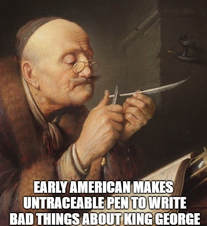 Hoplopaths want to ban everything gun related, but others, again referring to the president, think this is some sort of solution. These pea-brained ignoramuses would probably have voted to ban digital cameras and the Internet because it made child pornography much more available. No, the solution is not to take Snapchat away from your teenager and discuss why sending nudes is a bad idea, the “solution” is to pass a revenge porn law. This current hysteria is King George ordering all the birds in North America killed so that their feathers can’t be used as quills to write nasty letters to the editor about him. But background checks, blah blah blah… People steal guns all the time. They lie. They send their girlfriend into the dealer. If they don’t have guns, terrorists drive trucks into crowds. Crazy homeless people go on hammer and knife rampages. Impulsive murders are committed with lampstands, rocks, pieces of pipe, and baseball bats. You really think that by banning a “kitchen” and “recipes” you are going to stop people from baking “killer” cookies at home? But on the positive side, at least the NRA apparently told off President Cheeto on the issue. |
Archives
June 2024
CategoriesBlog roll
Clayton E. Cramer Gun Watch Gun Free Zone The War on Guns Commander Zero The View From Out West |
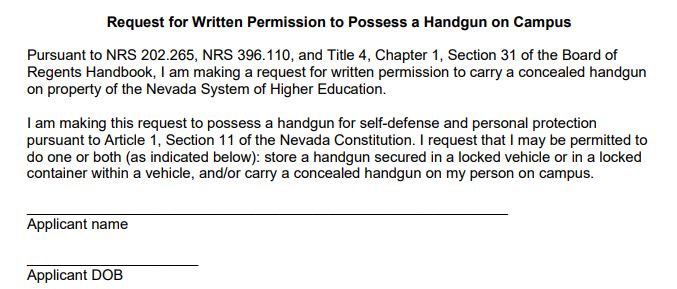
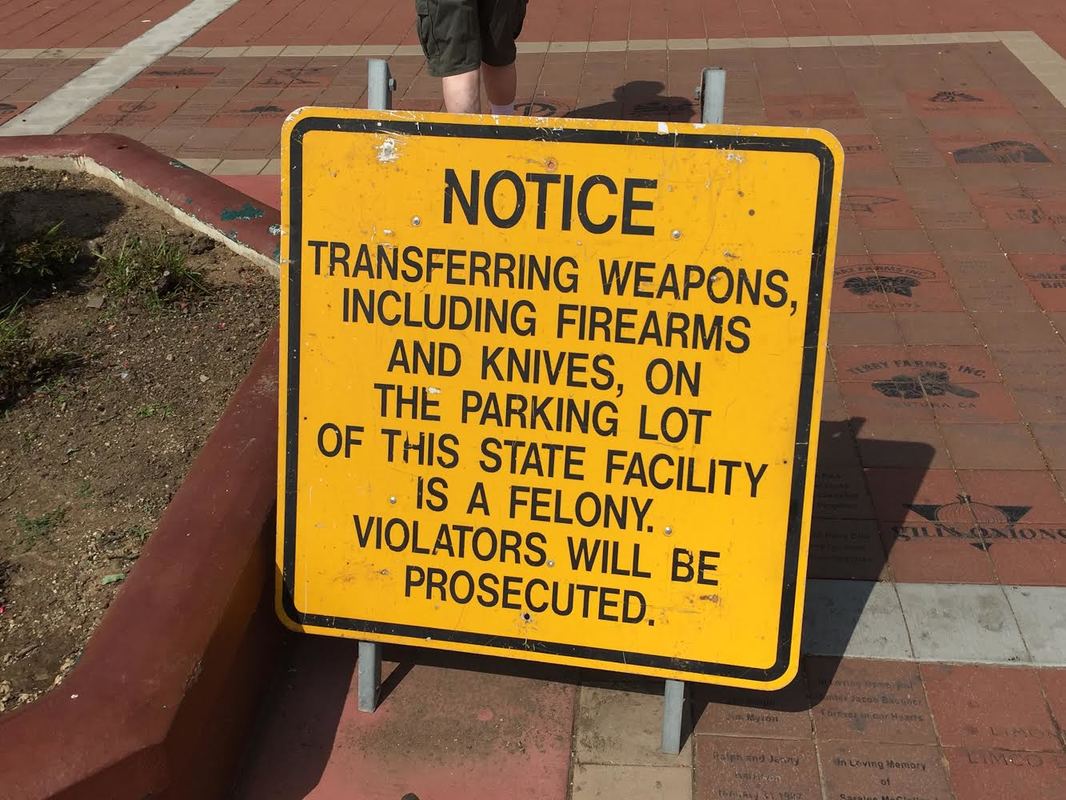
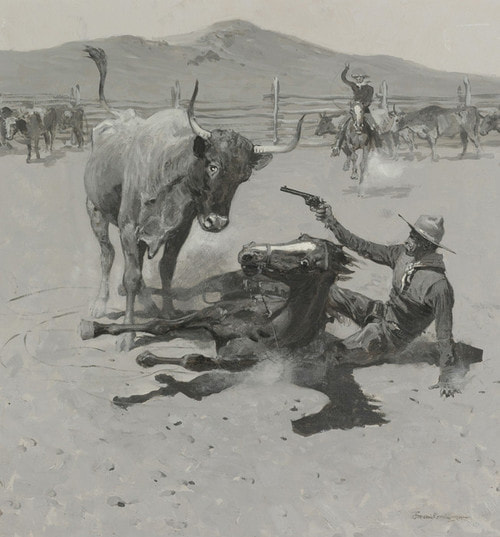
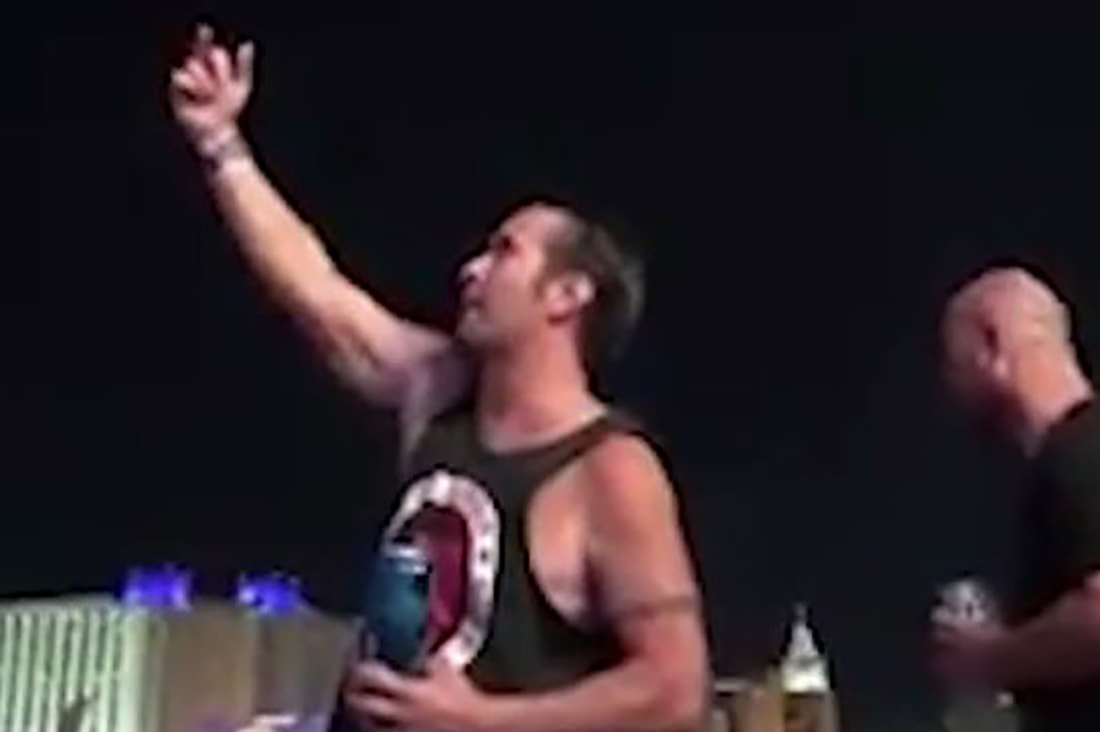
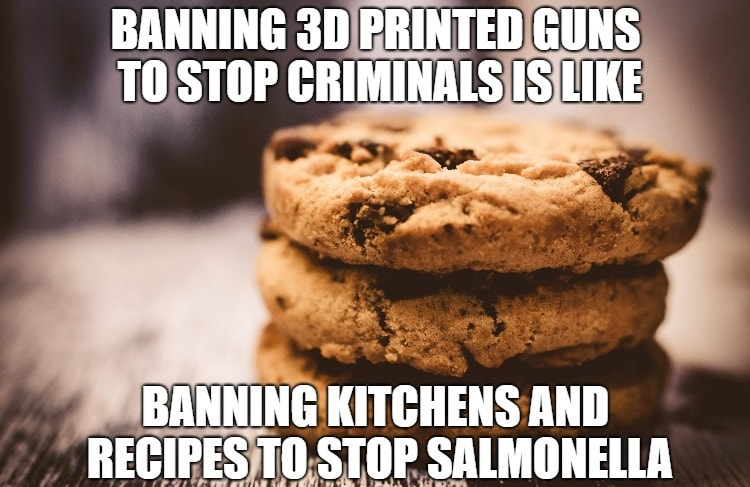
 RSS Feed
RSS Feed